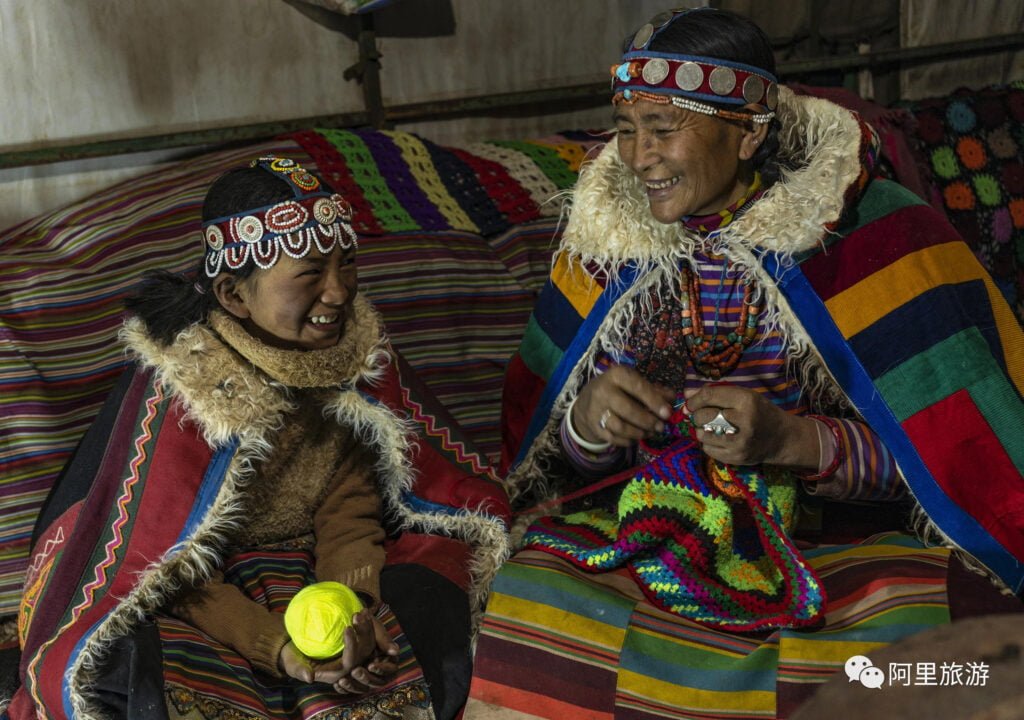Sarang Township and Diya Township in Zada County, Ngari Prefecture, are two hidden gems in the southern part of the county, bordering India. These remote townships offer not only stunning natural beauty but also a rich historical and cultural tapestry. Join us on an exploration of Sarang and Diya Townships, now situated along the Langchen Tsangpo (Sutlej River).

A Glimpse of the Geography
Nestled on the edge of the Himalayas atop the Qinghai-Tibet Plateau, Sarang and Diya Townships showcase an awe-inspiring diversity in topography. With towering mountains, deep valleys, and sprawling meadows, the region’s unique character stands out. The Langchen Tsangpo (Sutlej River) adds a touch of mystique to this landscape.
Sarang Township – The High-Altitude Haven
Sarang Township, situated at an impressive 3,645 meters above sea level, offers a breathtaking setting. In this township, you’ll discover charming villages such as Riba and Baiga, perched at even higher altitudes, reaching 4,215 meters and 3,580 meters, respectively. The primary occupation in these village communities revolves around animal husbandry, with a sprinkling of agriculture.
Diya Township – A Valley Oasis
In contrast, Diya Township predominantly occupies the lush Xiangquan River Valley, offering a warm and humid microclimate. With an altitude of 2,965 meters, Diya boasts accessibility and a diversified economy. Here, agriculture, animal husbandry, and sideline activities, including fruit cultivation, thrive. Diya’s apples, in particular, are renowned in the region.

Delving into History
Reni Village in Diya Township has a special place in history as the hometown of the famous Buddhist translator “Renqing Sangbo” during the early Guge Kingdom. In the 10th century, western Tibet saw the launch of the “Post-Hong Kong Period” propagation movement initiated by the Guge royal family. Two key figures emerged during this period: the Guge king and religious leader Yisiwo and the learned Kashmiri scholar, Teacher Rinchen Sangpo. Their collaboration marked a significant phase in the propagation of Buddhism in the region.
Rinchen Sangpo’s journey to becoming a renowned Buddhist translator was marked by a deep connection to the natural environment of the Langchen Tsangpo (Sutlej River) and the geographical advantages of Reni Village. This area played a pivotal role in connecting the plateau with South Asia, exposing Rinchen Sangpo to diverse influences that laid the foundation for his later accomplishments in Buddhism.
The Langchen Tsangpo (Sutlej River) Route
Zooming out to a broader perspective, the Langchen Tsangpo (Sutlej River) Channel emerges as a historically vital link between western Tibet and South Asia. It serves as a critical node in the “Langchen Tsangpo (Sutlej River) Channel,” connecting the plateau with the rest of the world. This revelation emphasizes the importance of this region in early human production and cultural exchanges.
Archaeological Insights
Recent archaeological excavations in the southwestern part of Zada County have uncovered prehistoric pottery, tombs, and utensils. In contrast, the Shiquan River Basin of Gar County presents fewer archaeological sites focusing on early agriculture. These findings further underscore the historical significance of the Langchen Tsangpo (Sutlej River) Channel.
An Intriguing Question
A tantalizing question arises: Did the Langchen Tsangpo (Sutlej River) Channel play a crucial role in introducing wheat crops from the Qinghai-Tibet Plateau to other regions? This query opens a window into the agricultural history of the plateau.
Shangshung Kingdom and Cultural Exchange
Exploring the influence of the Shangshung Kingdom, believed by some to be a tribal alliance, in the Langchen Tsangpo (Sutlej River) Basin is another fascinating aspect. The cultural and business exchanges between this region and the Shangshung Kingdom must have been vibrant during that era.
The Legacy of Western Tibet
Western Tibet, especially during the Ali Dynasty (Guge Kingdom), had a profound impact on the history of the region. Beyond the propagation of Buddhist Tantra, this era witnessed significant exchanges in terms of people, technology, culture, and commerce, making it a subject of substantial historical research.
An Explorer’s Journey
As I reflect on my travels, I realize that Sarang and Diya Townships hold a unique place in the tapestry of Ngari Prefecture. After numerous visits spanning more than a decade, I find myself revisiting these two townships. Amidst the changes in the region, Gumu Township and Jiangrang Township have remained untouched, preserving their unique charm.
FAQs
Q: Are Sarang and Diya Townships open to tourists?
A: Yes, both townships are accessible to tourists, offering a chance to explore their natural beauty and rich history.
Q: What is the best time to visit Sarang and Diya Townships?
A: The best time to visit is during the spring and summer months when the weather is milder and the landscapes are lush.
Q: Can visitors engage in trekking and hiking activities in the region?
A: Absolutely! The diverse topography of the region provides ample opportunities for trekking and hiking adventures.
Q: Is there accommodation available in Sarang and Diya Townships?
A: While not as developed as urban areas, you can find modest accommodations in the townships to enhance your experience.
Q: What is the local cuisine like in Sarang and Diya Townships?
A: The local cuisine offers a taste of Tibetan flavours, featuring dishes like momo (dumplings) and yak-based dishes that are a must-try for visitors.




















